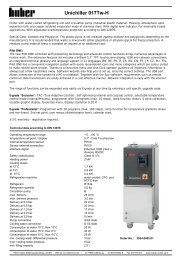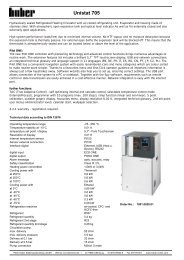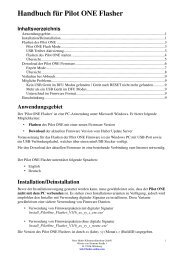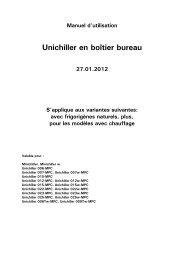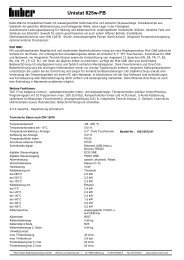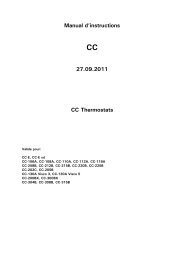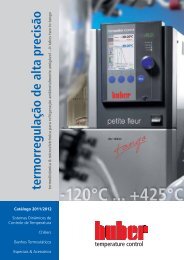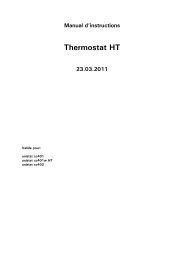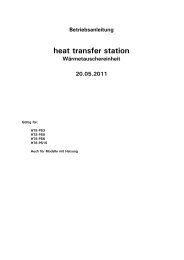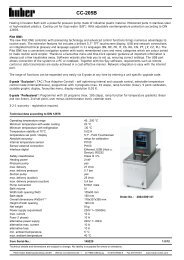Operating manual 27.09.2011 CC Heating Thermostats - HUBER
Operating manual 27.09.2011 CC Heating Thermostats - HUBER
Operating manual 27.09.2011 CC Heating Thermostats - HUBER
Create successful ePaper yourself
Turn your PDF publications into a flip-book with our unique Google optimized e-Paper software.
Location<br />
16<br />
Caution!<br />
- Transport the unit upright<br />
- The unit should be mounted in an upright and secure position, on a solid, stable<br />
surface<br />
- Place on a non flammable surface<br />
- Keep the area around the unit clean, to avoid slip and trip hazards<br />
- Set the brakes on the castors once the unit is in position<br />
- Place suitable absorbent material under the unit to catch any condensate and<br />
thermal fluid spills<br />
- Any spillage of thermal fluid should be immediately cleaned up<br />
- For large units, check the weight / load capacity for the flooring<br />
Thermal fluids<br />
We recommend the thermal fluids shown in our catalogue. The name of a thermal fluid<br />
is derived from the working temperature range and the viscosity at 25 °C.<br />
Examples of thermal fluids in our catalogue:<br />
M40.165.10:<br />
� Lower working limit -40 °C<br />
� Upper working limit 165 °C<br />
� Viscosity at 25 °C: 10 mm 2 /s<br />
The data sheet for the thermal fluid used is of utmost importance, and must be read<br />
before use. This data sheet should be followed.<br />
� Please note the classification of your machine according to DIN 12876<br />
� The chosen thermal fluid must be compatible with stainless steel 1.4301 (V2A)<br />
and FKM!<br />
� The maximum viscosity of the thermal fluid may not exceed 50 mm²/s at the<br />
lowest temperature reached!<br />
� The maximum density of the thermal fluid may not exceed 1kg / dm³



